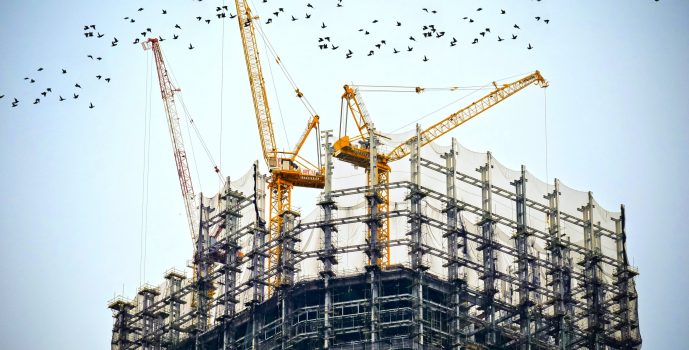By its very nature, the construction industry is arguably one of the most resource-hungry and environmentally detrimental sectors, globally. It’s very important to encourage biodiversity generally, yet, much has already been lost due to the years of urbanisation and agricultural development.
While legislation has finally started to address some of the issues, construction and development will – and must – continue. Luckily, nature thrives in all sorts of environments, even in the thick of industrial sites.
And, while it might seem strange that Reid Brewin Architects would write about such a topic, we take our responsibility for preserving the planet seriously – and wanted to share some mitigation measures that can be considered during any construction project.
Cover hollow posts and beams – It might sound like a relatively small solution in the grand scheme of things, but the minute additional cost in putting a lid on top of a sign post or other hollow structure will prevent small creatures from getting stuck inside.
Think about timing – If it’s possible, coordinate construction works with breeding seasons of any species close to a construction site – that way, nature can take its course without disruption.
Negate ground pollution – Consider the impact working practices have on the soil. It’s becoming increasingly common to clean lorry wheels before vehicles leave the site these days – which is great for the roads, but there are numerous chemicals involved in this process, where spillage should be managed rather than being left to leach into the ground.
Avoid accidental habits – For larger development, the very existence of the construction site can be around for so long that it becomes an ecological habitat in itself – which can create problems when it’s time for removal. Therefore, small, regular changes can avoid endangered species taking residence in temporary structures.
Assess your fencing solutions – How you set your boundary is key to security and safety, but the type of barrier should take into consideration the type of species that might transfer to the site. Explore low level, fine, barriers for smaller reptiles or larger, more robust, fences for mammals.
Dial down the floodlights – Lighting of public spaces has improved massively in recent years, with the use of more efficient LED lighting. Adopt greener versions where possible, focus the beam onto the task at hand, and – wherever possible – avoid flooding the night sky and hiding the stars. The same concept applies to any lighting around the site itself, to ensure there’s less impact on the local nocturnal fauna.
Work with what you have – Without much additional cost, artificial habitats can be incorporated to buildings and around developments to give animals and insects a fighting chance. Solutions such as insect hotels, reptile refuges, and water features can each contribute to supporting biodiversity.
Consult a landscape architect – Finally, you don’t have to go it alone. Find a specialist who can help you to choose plant and tree species which would ordinarily be found in the local environment. They can also help with everything from managing invasive exotic species and encouraging indigenous varieties, to helping nail down the right time of the year to cut the grass.
While these measures should help to reduce disruption to the local fauna and flora, we would always recommend maintaining continuous ecological surveys as part of the site works – to avoid any surprises!








